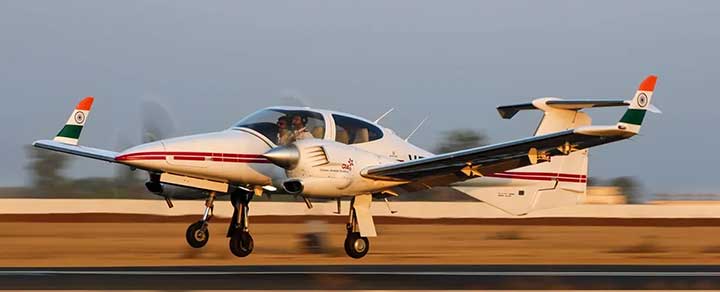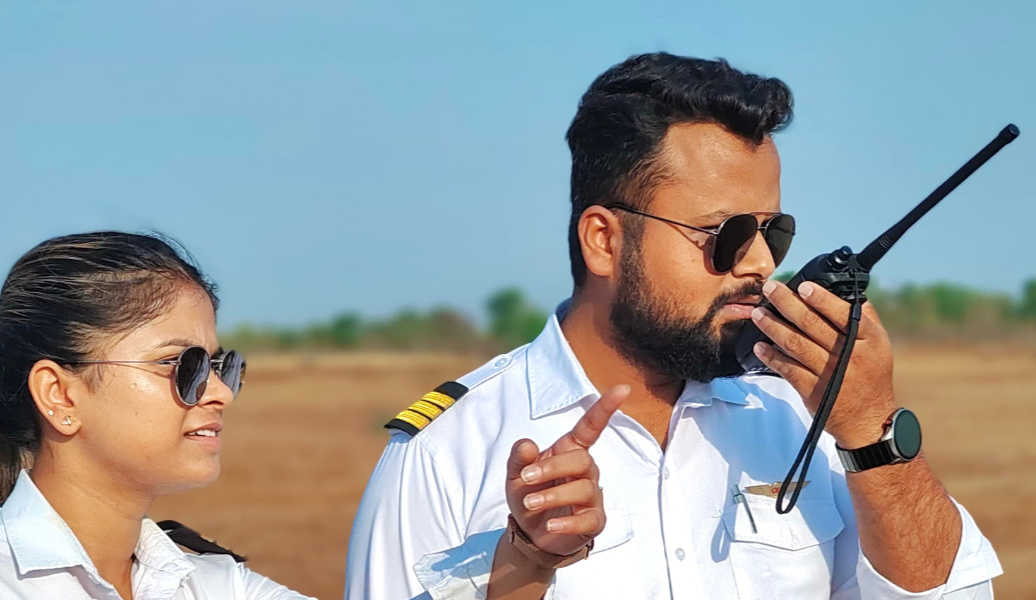Blogs & News

A Close Look at Pilot Training in India and the USA

Pilot training, a gateway to the vast expanse of the skies, varies across the globe. In this article, we explore the distinctions between pilot training programs in India and the United States, two nations with burgeoning aviation industries and a constant demand for skilled aviators.
Regulatory Framework:
One of the primary differences between pilot training in India and the USA lies in the regulatory frameworks governing aviation. In India, the Directorate General of Civil Aviation (DGCA) oversees aviation regulations and certification. The DGCA's stringent standards ensure a comprehensive and standardized approach to pilot training, covering everything from Private Pilot Licenses (PPL) to Airline Transport Pilot Licenses (ATPL). In the United States, the Federal Aviation Administration (FAA) serves a similar role, albeit with some variations in regulatory specifics.
For Indian students who do their training in the United States and want to return to India, they will have to do a licence conversion in India to convert their FAA licence to an Indian DGCA licence.
Infrastructure and Facilities:
The USA boasts a vast and well-established network of flight schools, training academies, and aviation facilities. The country's expansive airspace provides ample opportunities for diverse flight experiences. Additionally, the presence of over 1000 municipal airfields in the country contributes to the comprehensive education of aspiring pilots.
On the other hand, India has witnessed substantial growth in its aviation infrastructure in recent years. While the country boasts a few reputable flight training schools, there has been huge growth in the sector over the last few years. Many airports have also been added in India, increasing the diversity of flights possible in India manifold. The diversity of terrain and weather conditions in India also offers a unique set of challenges and learning experiences for pilots in training.
Cost of Training:
One of the most significant disparities lies in the cost of pilot training. Training to become a pilot in the United States is comparatively more expensive than in India. The cost includes flight hours, simulator sessions, classroom instruction, and various fees associated with obtaining different licences in the USA. In addition to higher training costs in the United States, there are additional costs for Indian students looking to do their flying in the USA, including but not limited to airfares to the USA, rentals of housing and transport and a generally higher cost of living. This cost difference is further compounded for Indian students by the often fluctuating currency conversion between the Indian rupee and the US Dollar.
This often influences the decision-making process for aspiring pilots, with financial considerations playing a pivotal role.
Duration and Structure:
The structure and duration of pilot training programs do not differ too greatly between the two countries. In both countries, the path typically involves obtaining a Private Pilot License (PPL), followed by additional certifications leading to a Commerical Pilot License (CPL). The structured curriculum ensures a gradual progression, allowing students to build on their skills and knowledge.
The major difference is that anyone who does their pilot training in the USA and then wants to work in the aviation industry in India, must return to India and do conversion training which can be up to 20 hours of flying and two written exams. This leads to a longer time duration for the issue of an Indian CPL for anyone doing their training abroad.
Global Opportunities:
Both India and the USA serve as breeding grounds for skilled aviators sought after by airlines globally. The reputation of pilot training institutions and airlines in these countries often opens doors for international job opportunities. Indian and American pilots can be found flying for airlines around the world, showcasing the global recognition of the quality of training received in these two nations.
Conclusion:
Pilot training in India and the USA represents a fascinating interplay of regulations, infrastructure, costs, and global opportunities. While both countries contribute significantly to the global pool of skilled pilots, the nuances in their training programs reflect the diverse landscapes and challenges each nation's aviation industry navigates. Ultimately, whether soaring through the Indian skies or cruising over the vast expanses of the United States, aspiring pilots find their wings in distinct yet equally transformative environments.
With over 15 years of shaping skilled aviators, Chimes Aviation Academy stands as a leading Pilot Training Academy in India. We are committed to empowering aspiring pilots and contributing to the vision of Atma Nirbhar Bharat ( self-reliant India)- a Government of India initiative. We firmly believe that access to quality training should not be limited by financial or geographic constraints. Let us be your guide as you embark on your aviation journey, right here in India.




